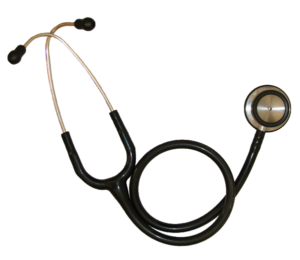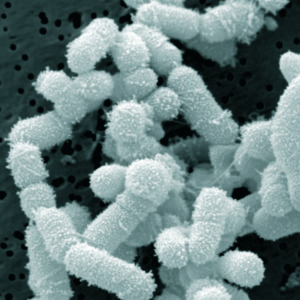 Why exercise alone won't get those pounds off - it's because the body adapts to higher exercise levels. We all suspected that, but it is depressing... From Medical Xpress:
Why exercise alone won't get those pounds off - it's because the body adapts to higher exercise levels. We all suspected that, but it is depressing... From Medical Xpress:
Why you won't lose weight with exercise alone
Exercise by itself isn't always enough to take off the weight. Now, evidence reported in the Cell Press journal Current Biology on January 28 helps to explain why that is: our bodies adapt to higher activity levels, so that people don't necessarily burn extra calories even if they exercise more.
People who start exercise programs to lose weight often see a decline in weight loss (or even a reversal) after a few months. Large comparative studies have also shown that people with very active lifestyles have similar daily energy expenditure to people in more sedentary populations.
Pontzer says this really hit home for him when he was working among the Hadza, a population of traditional hunter-gatherers in northern Tanzania."The Hadza are incredibly active, walking long distances each day and doing a lot of hard physical work as part of their everyday life," Pontzer says. "Despite these high activity levels, we found that they had similar daily energy expenditures to people living more sedentary, modernized lifestyles in the United States and Europe. That was a real surprise, and it got me thinking about the link between activity and energy expenditure."
To explore this question further in the new study, Pontzer and his colleagues measured the daily energy expenditure and activity levels of more than 300 men and women over the course of a week.In the data they collected, they saw a weak but measurable effect of physical activity on daily energy expenditure.
But, further analysis showed that this pattern only held among subjects on the lower half of the physical activity spectrum. People with moderate activity levels had somewhat higher daily energy expenditures—about 200 calories higher—than the most sedentary people. But people who fell above moderate activity levels saw no effect of their extra work in terms of energy expenditure."The most physically active people expended the same amount of calories each day as people who were only moderately active," Pontzer says.


 This confirms what researchers such as
This confirms what researchers such as  Once again, two opposing views about beards have been in the news - that they harbor all sorts of nasty disease-causing bacteria vs they are hygienic. An earlier
Once again, two opposing views about beards have been in the news - that they harbor all sorts of nasty disease-causing bacteria vs they are hygienic. An earlier  A recent study using
A recent study using  Bad news about ticks: the blacklegged ticks (Ixodes scapularis and the western Ixodes pacificus) that spread Lyme disease, are now reported in almost half of the counties in the U. S. Researchers found blacklegged ticks in 1,420 out of 3,110 counties in the continental U.S., or about 46% of counties, and found western blacklegged ticks in 111 counties, or about 4%. Combined, this is a 45% increase from 1998 when ticks were reported in 1,058 counties.Of course the tick-dense northeast is where Lyme disease is most common. Although the blacklegged tick is found from Florida to Minnesota, 95% of confirmed Lyme disease cases come from just 14 states in the northeast and upper Midwest.
Bad news about ticks: the blacklegged ticks (Ixodes scapularis and the western Ixodes pacificus) that spread Lyme disease, are now reported in almost half of the counties in the U. S. Researchers found blacklegged ticks in 1,420 out of 3,110 counties in the continental U.S., or about 46% of counties, and found western blacklegged ticks in 111 counties, or about 4%. Combined, this is a 45% increase from 1998 when ticks were reported in 1,058 counties.Of course the tick-dense northeast is where Lyme disease is most common. Although the blacklegged tick is found from Florida to Minnesota, 95% of confirmed Lyme disease cases come from just 14 states in the northeast and upper Midwest.  This study found that greater intake of dietary nitrate and green leafy vegetables was associated with a 20 percent to 30 percent lower risk of primary open-angle glaucoma (POAG), which is the most common form of glaucoma. Glaucoma can lead to vision loss and even blindness (if left untreated).There is evidence that nitric oxide has a role in primary open-angle glaucoma, and that dietary intake of nitrates is beneficial. Green leafy vegetables (iceberg lettuce, romaine lettuce, mustard, or chard, cooked spinach, and raw spinach) were found to be most beneficial, as well as kale and collard greens. Those who ate the most green leafy vegetables ate about 1.5 servings per day, versus .3 servings daily in the lowest intake group.
This study found that greater intake of dietary nitrate and green leafy vegetables was associated with a 20 percent to 30 percent lower risk of primary open-angle glaucoma (POAG), which is the most common form of glaucoma. Glaucoma can lead to vision loss and even blindness (if left untreated).There is evidence that nitric oxide has a role in primary open-angle glaucoma, and that dietary intake of nitrates is beneficial. Green leafy vegetables (iceberg lettuce, romaine lettuce, mustard, or chard, cooked spinach, and raw spinach) were found to be most beneficial, as well as kale and collard greens. Those who ate the most green leafy vegetables ate about 1.5 servings per day, versus .3 servings daily in the lowest intake group. This study showed an association of eating lots of flavonoid rich foods (strawberries, blueberries, cherries, blackberries, red wine, apples, pears, and citrus products) and lower rates of erectile dysfunction. A higher intake of several flavonoids also reduces diabetes and cardiovascular disease risk. Keep in mind that erectile dysfunction is thought to be of vascular etiology (the cause) and so shares risk factors (such as hypertension, obesity, and smoking) with cardiovascular disease. Studies have shown that
This study showed an association of eating lots of flavonoid rich foods (strawberries, blueberries, cherries, blackberries, red wine, apples, pears, and citrus products) and lower rates of erectile dysfunction. A higher intake of several flavonoids also reduces diabetes and cardiovascular disease risk. Keep in mind that erectile dysfunction is thought to be of vascular etiology (the cause) and so shares risk factors (such as hypertension, obesity, and smoking) with cardiovascular disease. Studies have shown that  The following article is interesting because it describes how microbes are high up in the sky riding air currents and winds to circle the earth, and eventually drop down somewhere. This is one way
The following article is interesting because it describes how microbes are high up in the sky riding air currents and winds to circle the earth, and eventually drop down somewhere. This is one way  New research that found that microbial communities vary between the sinuses in a person with chronic sinusitis. This is a result that many sinusitis sufferers already suspect based on their sinusitis symptoms. The researchers also found that bacterial communities in the sinuses vary between people with chronic sinusitis. It is frustrating though for me to read study after study where the researchers focus on describing the types of bacteria found in chronic sinusitis sufferers (and then just saying that the sinus
New research that found that microbial communities vary between the sinuses in a person with chronic sinusitis. This is a result that many sinusitis sufferers already suspect based on their sinusitis symptoms. The researchers also found that bacterial communities in the sinuses vary between people with chronic sinusitis. It is frustrating though for me to read study after study where the researchers focus on describing the types of bacteria found in chronic sinusitis sufferers (and then just saying that the sinus  Could the bacteria described in this research be another probiotic or beneficial bacteria (besides Lactobacillus sakei) that helps protect against sinusitis? New research found that the harmless bacteria Corynebacterium accolens is "overrepresented" in children free of Streptococcus pneumoniae (pneumococcus) - which commonly colonizes in children's noses (and that can live harmlessly as part of a healthy microbiome), but it is also an important infectious agent. Streptococcus pneumoniae is a major cause of pneumonia, septicemia, meningitis, otitis media (ear infections), and sinusitis in children and adults worldwide.
Could the bacteria described in this research be another probiotic or beneficial bacteria (besides Lactobacillus sakei) that helps protect against sinusitis? New research found that the harmless bacteria Corynebacterium accolens is "overrepresented" in children free of Streptococcus pneumoniae (pneumococcus) - which commonly colonizes in children's noses (and that can live harmlessly as part of a healthy microbiome), but it is also an important infectious agent. Streptococcus pneumoniae is a major cause of pneumonia, septicemia, meningitis, otitis media (ear infections), and sinusitis in children and adults worldwide.